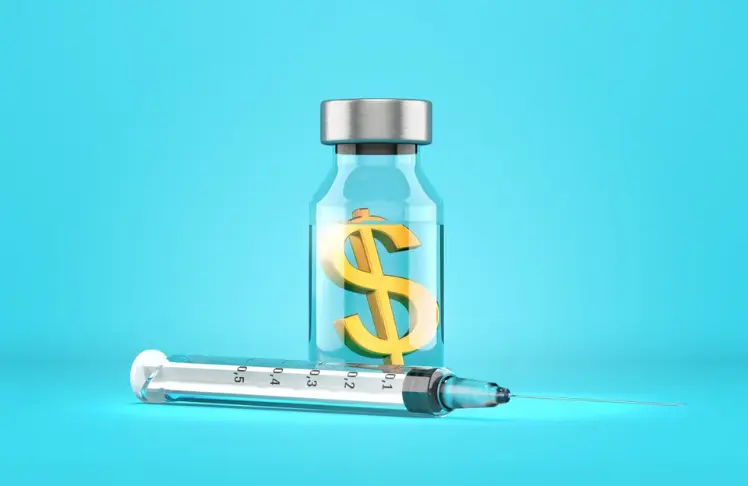
This is part one of “Life or Debt,” Word In Black’s drug price series, exploring the ways Black folks living with chronic disease are forced to manage an expensive health care system. Read the series.
$8,000 to $10,000 a year.
That’s about how much Jason Noldon spends to manage his Type 1 diabetes. With regular technology updates to insulin pump equipment, batteries, syringes, alcohol pads, tape, a gym membership, and the monthly price of insulin, he estimates he probably pays even more.
But his story paints a broader picture of what it’s like to care for diabetes in the United States. 34 million adults have diabetes, and about 5% to 10% of people living with diabetes have Type 1. Although Type 2 is more commonly diagnosed, the quality of care you get for either kind of diabetes depends on access to health care. Overall, Black adults are nearly twice as likely as white adults to develop Type 2 diabetes.
It’s been 13 years since Noldon was diagnosed with the autoimmune disease that prevents his pancreas from producing insulin. Ever since, it’s been an uphill battle navigating the health care system and insurance companies.
Last summer, his doctor advised him to get a new insulin pump. The current one wasn’t providing accurate readings. In July, he applied for the upgrade through his health care plan. In August, he changed health plans — a decision made by his employer. Due to the change, his insurance deductible was reset. Even though he paid it until the end of December.
With the change, he sent all the necessary paperwork to the insurance company. But, Noldon says, they delayed the process by requesting additional paperwork from his doctor.
He didn’t get his new pump until he paid the out-of-pocket cost of $1,200. Then, he had to pay another $1,100 to upgrade the software to match the new pump. This excludes the price of the 90-day supply of insulin his doctor prescribes.
“It felt like a setup,” he says. “That just sucked for me. I did everything I was still supposed to do. Had I been able to get the order done before the end of the year, it would have been 100% covered by my insurance deductible.”
This was just the latest example for Noldon.
According to the U.S. Bureau of Labor Statistics, between January and June 2023, medical care commodities or medicinal drugs, supplies, and equipment rose above the annual inflation rate — with a range of 1% to 3% increase.
And it doesn’t help that January is the most popular month for biopharmaceutical companies to raise the prices of their drugs. Just after the new year, drugmakers, including Pfizer, Sanofi, and Takeda, were set to raise the prices of more than 500 drugs.
The Cost of Care
Dr. Archana Sadhu is the director of the system diabetes program and director of pancreas transplantation at Houston Methodist Hospital. She says her mission as a physician is to help and heal people. But it becomes more challenging when the drugs on the market to treat diabetes are not always accessible to her patients.
20%-30% of her current patient population is Black. In her more than 25 years of experience, she’s treated thousands of patients with Type 1 and 2 diabetes. Throughout her career, many of Sadhu’s patients have rationed their insulin due to the price of insulin continuously rising over the years.
“It was horrible,” she says. “They would come into the hospital because they ran out of insulin. They couldn’t afford it for the month, and it got out of control.”
On Jan. 1, 2023, out-of-pocket costs for insulin were capped at $35 per monthly prescription for Medicare Part D enrollees as part of the Inflation Reduction Act. Novo Nordisk, Eli Lilly Co., and Sanofi are the three companies that control 90% of the world’s insulin market by value. Each company cut the U.S. insulin prices between 70% to 78%.
But it doesn’t remedy the fact that patient spending on insulin tripled in the last decade, according to the American Diabetes Association — from $8 billion in 2012 to $22.3 billion in 2022. Between 2017 and 2019, more than a dozen Americans died because they rationed their insulin — with 10 deaths between the ages of 20 and 28.
“Even now, patients still don’t know to ask for that insulin cap price,” Sadhu says. “Your pharmacist should be able to tell you — it shouldn’t cost more than $35.”
Fighting Insurance Companies, Pharmacy Benefit Managers
Patients living with diabetes and who have insurance must navigate insurance companies and the pharmaceutical industry to access their needed medications.
Sadhu breaks down the process. Physicians write a prescription. Each insurance company has a drug formulary — which is a list of prescription drugs covered by the company. Pharmacy benefit managers will decide on the formulary, which is traditionally based on economics.
PBMs act as middlemen between pharmacies, insurance companies, pharmaceutical manufacturers, and drug wholesalers. Initially, Sadhu says they were supposed to help patients and insurance companies keep the costs of prescription drugs down. However, PBMs have come under scrutiny because of business practices. For example, pharmaceutical companies negotiate with PBM companies to get their drugs in the formulary by offering rebates.
“It’s that negotiation and business practice that is actually going to affect what access a patient has to a drug,” Sadhu says. “They have really become the evil middlemen that we can’t fight, we can’t touch them as physicians.”
If a patient is lucky enough to manage these systems, they are still left at the mercy of pharmacy benefit managers and insurance companies — who can easily dictate how much they will cover for a drug.
“We are advocates for patients. We go through so much training and education to learn how to apply science,” Sadhu says. “Then we get handicapped by issues like this. It’s almost demoralizing. They don’t care what we think; they’re looking at profit … and revenues.”
For patients without insurance, the out-of-pocket cost of insulin is quite literally out of reach. In 2022, 10% of Black Americans were uninsured, while 6.6% of white Americans were uninsured. Depending on the state and income level of individuals, they may qualify for certain programs. But Sadhu says it’s unlikely uninsured patients would be able to access an endocrinologist like herself.
A Broken System that Kills
“No one should have to struggle to afford their insulin,” Sarah Ryan, a spokesperson for PhRMA, a trade association representing biopharmaceutical companies, says. “We are advocating policy reforms that fix a broken system where insurance companies and their middlemen are blocking people from getting lower-priced insulins.”
But it’s going to take more than policy reform to fix the health care system that continues to harm those who are most vulnerable.
“I have to have the hormone, or I’ll die,” Noldon says. Without a regular dosage of insulin, he wouldn’t survive more than a couple of days.
There were times at work when he had to be careful of challenging his supervisors so as not to lose his job. If he loses his job, like most Americans, he loses his health care benefits. Without health care benefits, he would pay about $1,600 out-of-pocket for a 90-day supply of insulin.
“It’s a vicious cycle, and there’s no end in sight,” he says. Even with the federal government capping insulin prices for Medicare Part B and D enrollees, Noldon is wary that it will create any significant change. “It just continues to get more expensive, and there’s more hoops to jump through every single year.”
In a July 2023 KFF Health Tracking Poll, about one in four U.S. adults say it is either somewhat or very difficult for them to afford prescription drugs. 36% of Black adults were more likely than 24% of white adults to say it is difficult for them to pay for prescription drugs.
Type 1 diabetes does not discriminate, Noldon says, but he does acknowledge the discriminatory health care practices that continue to cause harm to Black people. As he continues to manage his diabetes, he’s burdened with navigating a “mess” of a health care system.
“Health care is something you need; it’s not a choice.”















